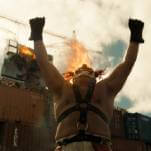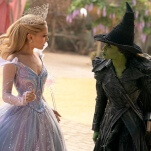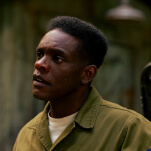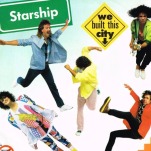Life in New York City from the ’60s to the ’80s has been documented more or less from stem to stern. The multiple modern-art movements, the wanton sexuality, the rise of punk and hip-hop, and the preoccupation with debt, blackouts, serial killers, and the ongoing soap opera of the New York Yankees have all been charted, analyzed, and in some cases even fictionalized. Celine Danhier’s documentary Blank City inevitably overlaps some of what’s gone before. While covering the ’70s and ’80s underground film and music scenes that came to be known as “No Wave,” Blank City hits all the usual marks: how NYC used to be a total shit-heap, ruled by rats and roaches, and how a group of young artists gravitated to each other, determined to rebel against the generation before and to “do something different,” until big money, Ronald Reagan, and AIDS changed everything. In the abstract, this story’s been told before.
But in its particulars, Blank City is long overdue. Danhier focuses mainly on the no-budget cinema that arrived in concert with the emergence of bands like Television and the Ramones. Musicians were making movies, artists were making music; according to famous scenester John Lurie, “Nobody was doing what they knew how to do.” While living in massive, dirt-cheap studio apartments in a crumbling downtown, budding filmmakers Amos Poe, Eric Mitchell, Michael Oblowitz, Jim Jarmusch, Vivienne Dick, and Scott B and Beth B borrowed cameras, stole film, and headed out into their bombed-out neighborhoods with friends like Lurie, Steve Buscemi, Ann Magnuson, Debbie Harry, Vincent Gallo, Jean-Michel Basquiat, and Lydia Lunch to shoot plotless Super 8 movies full of ugliness and rage. The films screened at punk clubs and art spaces, and eventually made it into international festivals and onto the radar screens of big-time critics and the uptown art crowd.
Danhier could’ve done a better job of keeping the timeline straight, and her talking-head-plus-archival-footage format doesn’t do full justice to filmmakers who prided themselves on unconventionality. But it’s exciting to see clips from these often-hard-to-find films, and it’s rare for a rise-and-fall-of-an-artistic-movement story to have a second act, as Blank City does. After critical respectability and art-world megabucks stifled the original No Wave generation, another group quickly followed, led by Nick Zedd and Richard Kern, pledging allegiance to an even nastier-looking “cinema of transgression.” In the end, Blank City becomes not just a salute to the artistic adventurousness of a bygone New York, but a reminder that new strains of creativity keep emerging, just when the scene looks stalest.







































